Hello! In this post, I will deal with the fact that I regularly get bonfire in comments in other posts in the official PocketBook blog. Namely: I will repeatedly, enthusiastically mention the Amazon Kindle. Just reader Kindle Oasis 2017 is one of the heroes of this material, and not to mention it really does not work. The second hero is
PocketBook 740 , the flagship reader of the PocketBook company. Below I will conduct a detailed comparison of these devices.

Why them? It is quite obvious, but just in case I will explain. PocketBook 740 is the top of the PocketBook lineup in 2018, and Kindle Oasis 2017, in turn, is today the top of the Amazon lineup. That is, these models have collected in themselves all the best that each of the companies has been able to create in all the years of its existence. And if this or that buyer is aimed at acquiring the most sophisticated reader on the market, then he will most likely choose from the PocketBook 740 and Amazon Kindle Oasis 2017.
Another thing is that to buy a Kindle in Russia, to put it mildly, is not easy. Even if you really want. Amazon does not directly send readers to Russia. So you have to use the services of a mediator from the United States.
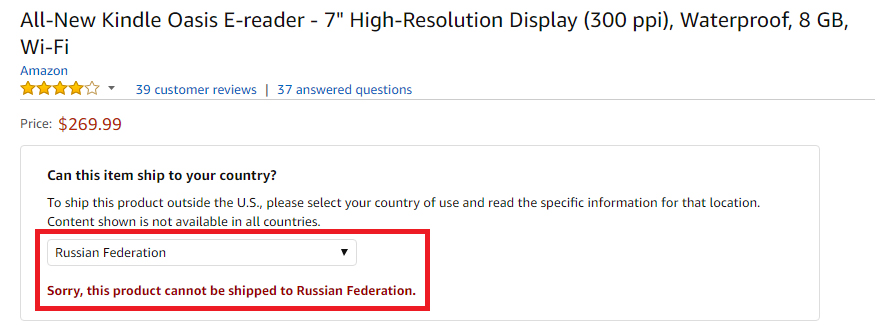
Well, or buy a Kindle Oasis 2017 already in Russia from resellers - naturally, with a substantial markup (below is the screen from Yandex.Market, and this is the cheapest offer - there are 27 thousand options).

Let's count. Kindle Oasis 2017 with 8 GB of memory exists in two versions: one shows ads, the other does not. In the US, they cost $ 250 and $ 270 (14,300 and 15,500 rubles at the current exchange rate). Suppose a thousand rubles to an intermediary, a couple of thousand - transfer from the States, and we get something in the region of 18-19 thousand rubles. Well, or you can buy in the Russian online store for 25 thousand (!) - and not to bother with intermediaries and shipments.
Another option is to buy in the States independently when visiting this country. The only question is, how many Russians in these States are.
"Interfax" says that in the first 9 months of 2017, 182,000 tourists from Russia visited the ocean, which is very small by the standards of the 150 millionth country. So self-purchase is an exception, but not an option that is really available to our compatriots.
PocketBook 740, in turn, costs 14,900 rubles. That is much cheaper. 3-4 thousand when compared with the order of Kindle from the United States. And by as much as 10 thousand, compared to Russian prices for the Amazon reader.
But OK, let's continue the conversation. And first, let's study the technical characteristics of both readers.

For now, I will not give any comments on the contents of the table - just note that some moments in theory are better implemented in PocketBook, and some in Kindle. As a matter of fact, I will tell you below. Green fill, implying a theoretical advantage, based on the formal characteristics, as practice has shown, does not always mean the total advantage of the model.
Appearance, design and management
Kindle Oasis 2017 is curious about its almost square asymmetrical design - there is something sweet about it. However, I can’t call the absolutely universal design of this reader with a “hump” on the rear panel.

And that's why. When you read while sitting, and the reader is at an angle of 45 degrees (roughly speaking) with respect to the ground, then everything is fine. But if you read lying down (and personally I usually indulge in literary pleasures that way), then holding the device almost vertically is not very convenient. Somehow it ... Falls down on the heavier side, or something. I will emphasize three times: perhaps this is a taste or, if you like, my individual peculiarity. But I cannot say anything about this moment, because I immediately fixed it, and he alerted me a little. PocketBook 740 doesn’t have this feature - it’s comfortable to hold the reader when sitting and reading while reading.
For the design of the PocketBook 740, too, can be commended: it is markedly different from all that we have seen in previous models of this company, and is different for the better. PocketBook 740 looks fresh and pretty.

Kindle Oasis 2017 can normally be kept on weight in virtually one way: for the massive part, the one into which the battery and all the hardware are integrated.

Here, in fact, readers behind side by side. To make it clear what kind of "hump" in question.

You can hold the Kindle with your hand behind it, but it is difficult to hold it in this position - just because of this hump, which is almost a centimeter thick. The “hump” also has a very slippery surface, the reader can simply slide out, if you hold it, clasping it in the back.

Keeping the Kindle Oasis 2017 for the thin part is not very convenient, since the heavier part - the one with the “hump” - begins to outweigh. The hand is strained and tired in minutes.

PocketBook 740 can be easily grabbed from behind, which is a plus. The width of this model is 4 mm less than that of the Kindle Oasis 2017, and the “hump” is absent, so nothing interferes with the hand.
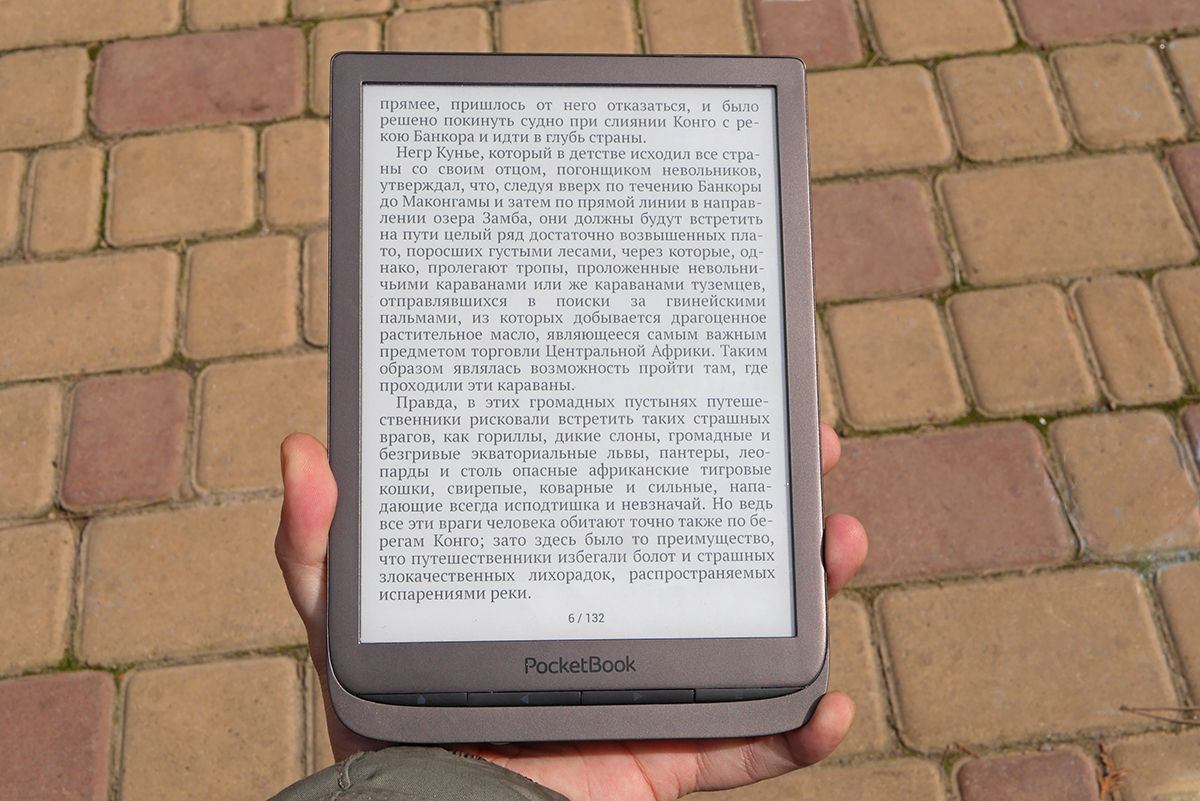
PocketBook 740 can also be held behind the sidewall: again, there is no difference in the weight of the right and left parts of the device, it does not really change anything, and therefore this option of grip turns out to be quite comfortable in practice.

Please note that the difference in weight between the PocketBook 740 and Kindle Oasis 2017 is only 16 g in favor of the latter (210 and 194 g, respectively). In practice, it seems that everything is just the opposite - the Kindle is perceived a bit heavier. It is a bit confusing that, with the same weight, the Kindle Oasis 2017 has a much smaller screen: 7 inches versus 7.8 for the PocketBook 740. In general, the Amazon developers, in my humble opinion, were a bit too clever with the layout of their device, it turned out to be non-optimal. The reader for its form factor weighs quite a lot, and its width is large - more than that of PocketBook 740, where the screen diagonal is 7.8 inches instead of 7! Plus, of course, the thickness is felt: because of the “hump” of the Kindle Oasis, 2017 seems thicker than the PocketBook 740. Although in fact there is actually no difference - in the thickest places both readers have about 8 mm.

Both models are focused right on both right-handers and left-handers. Almost all official photos of the page turning buttons on the Kindle Oasis 2017 are on the right, but if you turn the reader upside down, they (the keys) will be on the left. The text is reoriented automatically due to the gyro sensor. In this case, you can flip through the pages by clicking on the display - on its left and right sides.

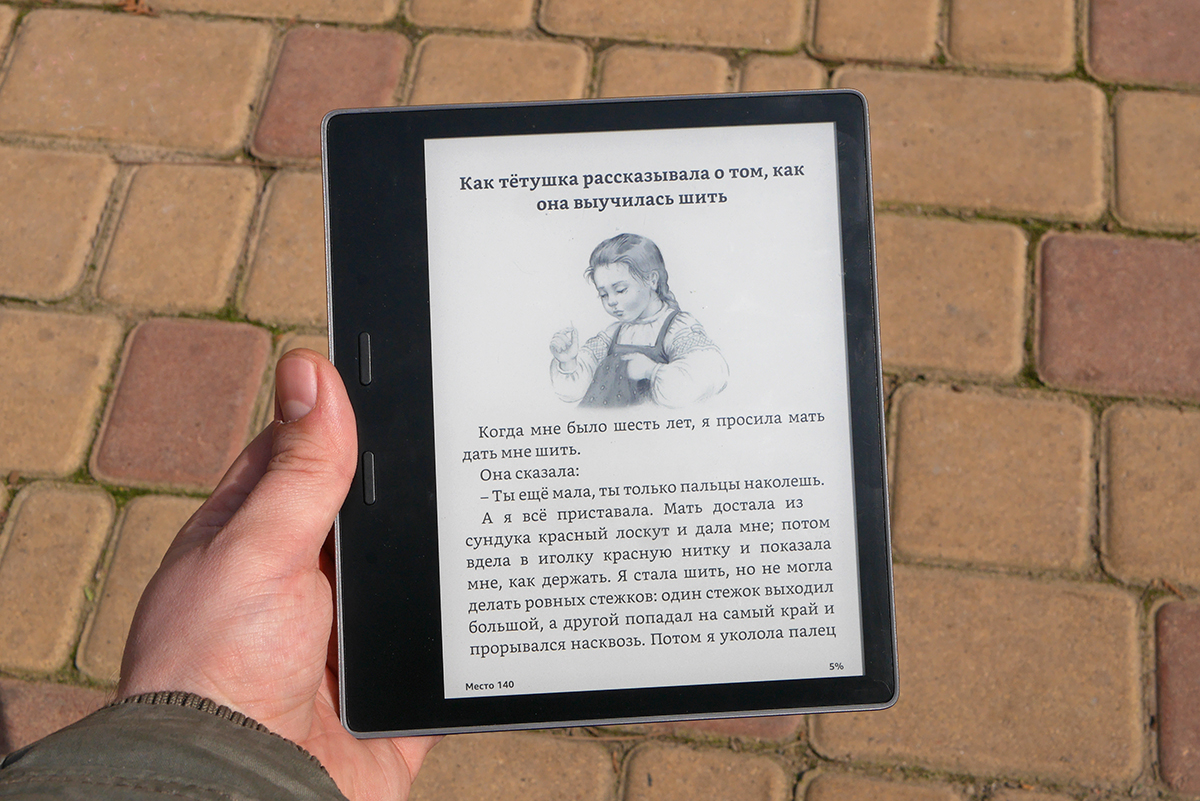
In the PocketBook 740, you do not need to flip anything, since the paging buttons are located in the center below the display. Plus, you can flip through by clicking on the edges of the screen - just as in the case of the Kindle.

The hardware keys in PocketBook 740 are not two, but four. This provides noticeably greater versatility in terms of management. For example, in the case of the Kindle Oasis 2017, the reader’s main screen can only be reached using the touchscreen display. On the paging keys, this function can not be hung, like any other. It is allowed only to swap the browse buttons - see the screenshot below.
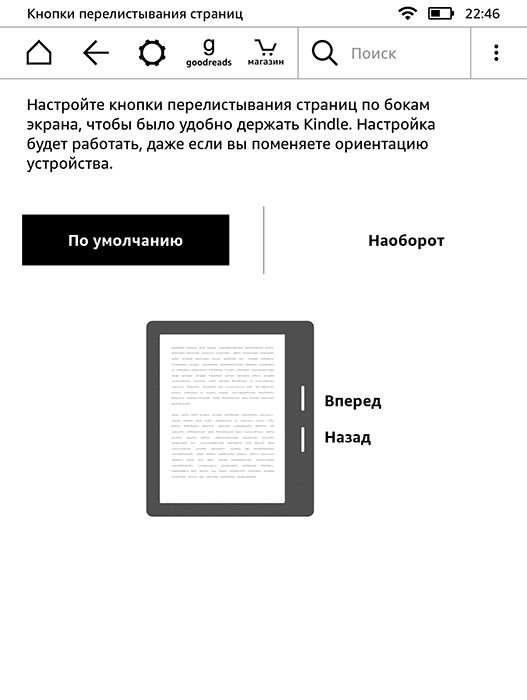
In the PocketBook 740, everything is different: there are both paging buttons and the “Home screen” and “Options” keys. Two options can be assigned to each of the two last buttons (for short and long presses). In general, if we talk about the push-button control and, in particular, its flexibility, then the PocketBook outperforms the competitor with a huge margin.

What can Kindle answer? For example, IPX8 water protection, which is not in the PocketBook 740. True, the level of protection of the Kindle Oasis 2017 causes some, um, doubts. We read the instructions, which says something like this: if you drop the reader into the water, you should immediately get it and dry it immediately. It is strongly not recommended to pour oil, food or other organic substances onto the device ...

Guys, is this really a protected reader? Let me remind you that PocketBook also has an “off-road” reader -
PocketBook 641 Aqua 2 . And she is not afraid of water, or soup, or porridge, or any other organic matter. You do not need to dry it: you drop it in water, take it out, wash off the foam (if it was in the bathroom) or pieces of vegetables (if, for example, there was a fall in the soup) under the tap - and read on. Apparently, Kindle Oasis 2017, like some other “pseudo-protected” readers, is simply processed inside with a special gel. This very gel saves from short contact with water, but liquids can penetrate into the wilds of the case, which is why the developers recommend that Kindle Oasis 2017 be dried as quickly as possible. And well, if the board gets ordinary water, and if the same soup? Pieces of vegetables will remain there and begin to grow mold. It is clear that this will happen very unlikely, but it is not worth excluding such an opportunity. In general, the conclusion: a kind of nominal protection against water from the Kindle Oasis 2017 is. And yes, this is an advantage over PocketBook 740, where there is no protection at all. Another thing is that high-quality "off-road" readers are best done not with the help of the gel, but with the help of tuling, which is used in the same PocketBook 641 Aqua 2 (this is generally the only reader in the world that is protected with the help of tilling). More about all this -
in a separate post .
By the way, here's the PocketBook 641 Aqua 2 after a coffee-and-milk shower:
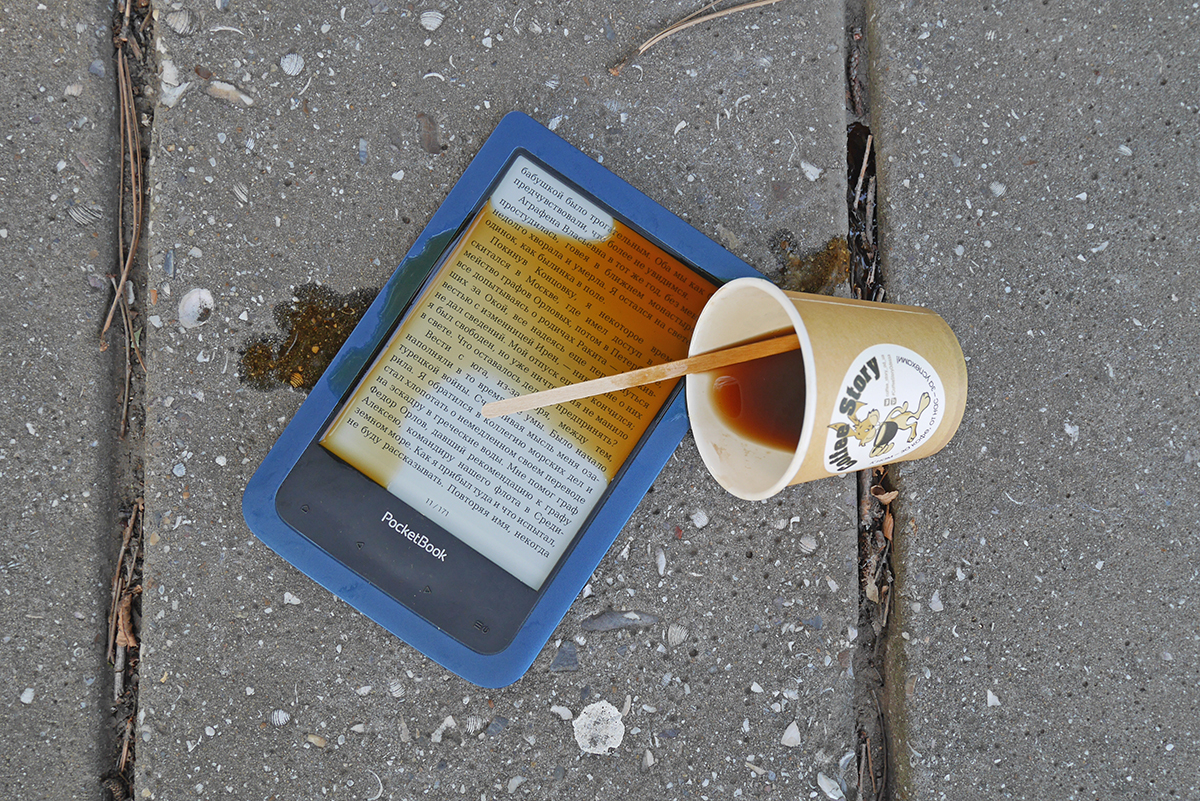
But writer Alex Exler bathes Aqua in beer:
Another advantage of the Kindle Oasis 2017 is the aluminum back panel. Objectively, it really is an advantage, and very many observers have sung the odes of this very panel. But I do not see anything very good in it. Yes, aluminum is pleasant to the touch, it provides a feeling of a serious thing. But how slippery it is! I already mentioned this above. And he is pretty quickly scratched. No, I did not specifically spoil the Kindle. But I have, for example, aluminum smartphones. Usually a couple of weeks after the start of operation of such a device, there are already noticeable “grooves” on it. I am sure that the same will happen with the Kindle Oasis 2017, if you carry this reader in a backpack or bag with other hard objects. What does Amazon say about it? And Amazon offers to buy branded case for $ 60. Good business, yes: make a reader out of delicate material and then offer covers at the price of a salary in Apatity, in order to keep delicate material in its original form.

PocketBook 740 has a plastic back panel. Fair? Never grieved about this. Yes, tactile sensations are not as premium as in the case of the Kindle Oasis 2017. However, the feeling of a serious quality thing is still there - and it is no less strong than in the case of the Amazon product. At the same time, scratching the PocketBook 740 is almost impossible. The plastic used in the model is very resistant. And he is not slippery at all.

Summing up the section on enclosures, I can say the following. You take the Kindle in your hands for the first time - and you think: yes, this is the thing! Cute, compact, aluminum! If Apple made readers, they might look that way. But this is only the first impression, which in this case, alas, turns out to be deceptive. You start to use this reader - and you realize that everything is very controversial with ergonomics, with weight distribution, and with options for grip. And aluminum is actually not so justified - due to the fact that it is stupidly slippery.
PocketBook 740 is kind of noticeably larger and, in theory, should be less convenient because of this. However, it is perhaps longer, but almost parity is observed in width and thickness. There are no strange problems with ergonomics in the PocketBook model, the case material is wear-resistant and non-slip. And it turns out that PocketBook 740 is just more convenient. Offering to the same more noticeably larger screen.

Screens
Both readers have displays based on the technology of "electronic ink", well, or E Ink. And there, and there are used the latest generation of screens - E Ink Carta. Their quality is almost the same - I did not find a radical difference in the display of text and pictures. The pixel density there and there reaches 300 ppi, so the clarity is the same. The saturation is slightly higher in Amazon: the letters SovSEm SovSEm are black, while the PocketBook 740 is rather dark gray. Again: I personally think that this is so and that is excellent. The comfort of reading the font does not affect the reading.
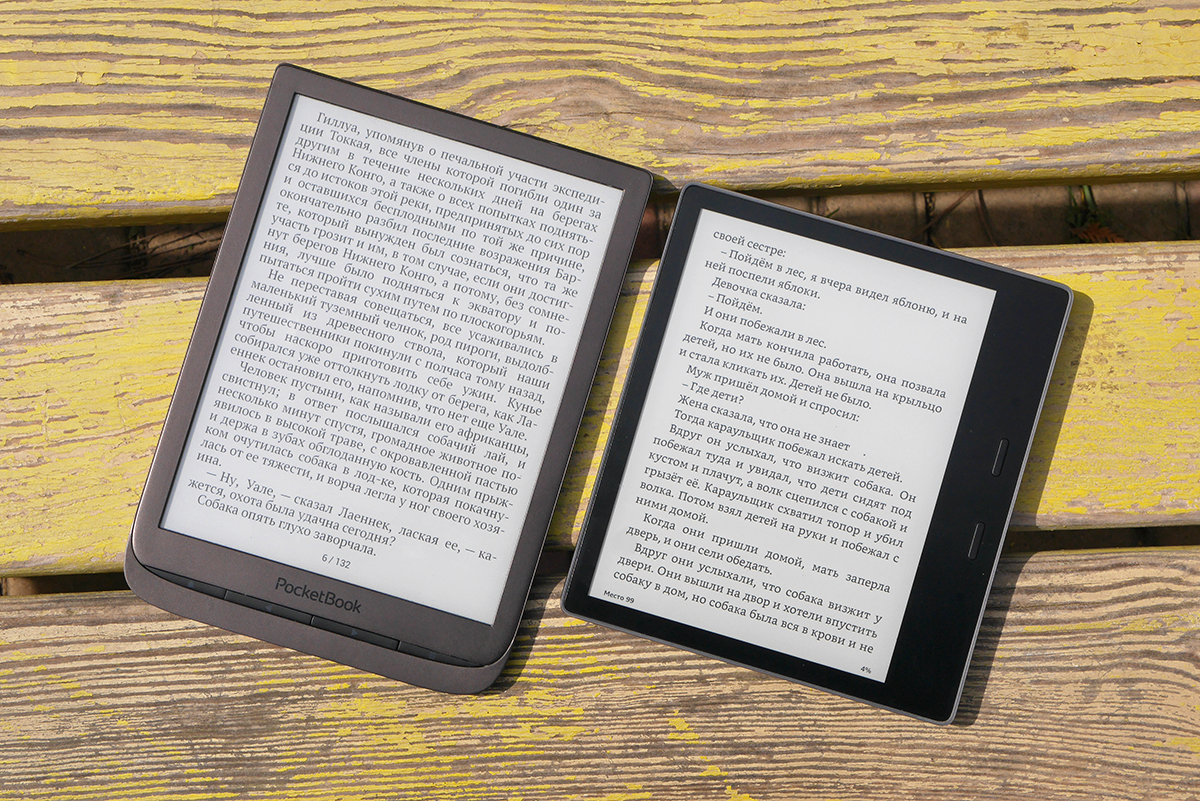
Another thing is that the PocketBook 740's screen is noticeably larger - its diagonal is 7.8 inches versus 7 for the Kindle Oasis 2017. 0.8 inches - would it seem like a lot? I answer: in practice, yes, this is a lot, and the PocketBook 740 screen is perceived much cooler due to larger sizes. If Kindle Oasis 2017 is just a little book, then PocketBook 740 seems ... you can say, electronic magazine. Something so big, large-scale and cool. Add to this the excellent quality of the screen of the packagebook - and it turns out that the happiness of an e-book fan is in front of you. No, well, seriously: 7.8 inches is really more than 7, and if you really choose from the screens of the Kindle Oasis 2017 and PocketBook 740, then the latter seems much more advantageous at least because of its size.
At the same time, the resolution of the poketbook is also higher: 1872 x 1404 against ... but I don’t know - against how many. Amazon does not provide official data. But if both there and there are 300 ppi, and the diagonal is larger for PocketBook, then it turns out that the resolution is lower for Kindle. And the lower the resolution and diagonal, the more difficult it is to view the same PDF. I'm not saying that on the Kindle it’s generally inconvenient to read them. But just on the PocketBook 740 - more comfortable. Because PDF pages are displayed on a larger screen, which means that text and images are also larger.
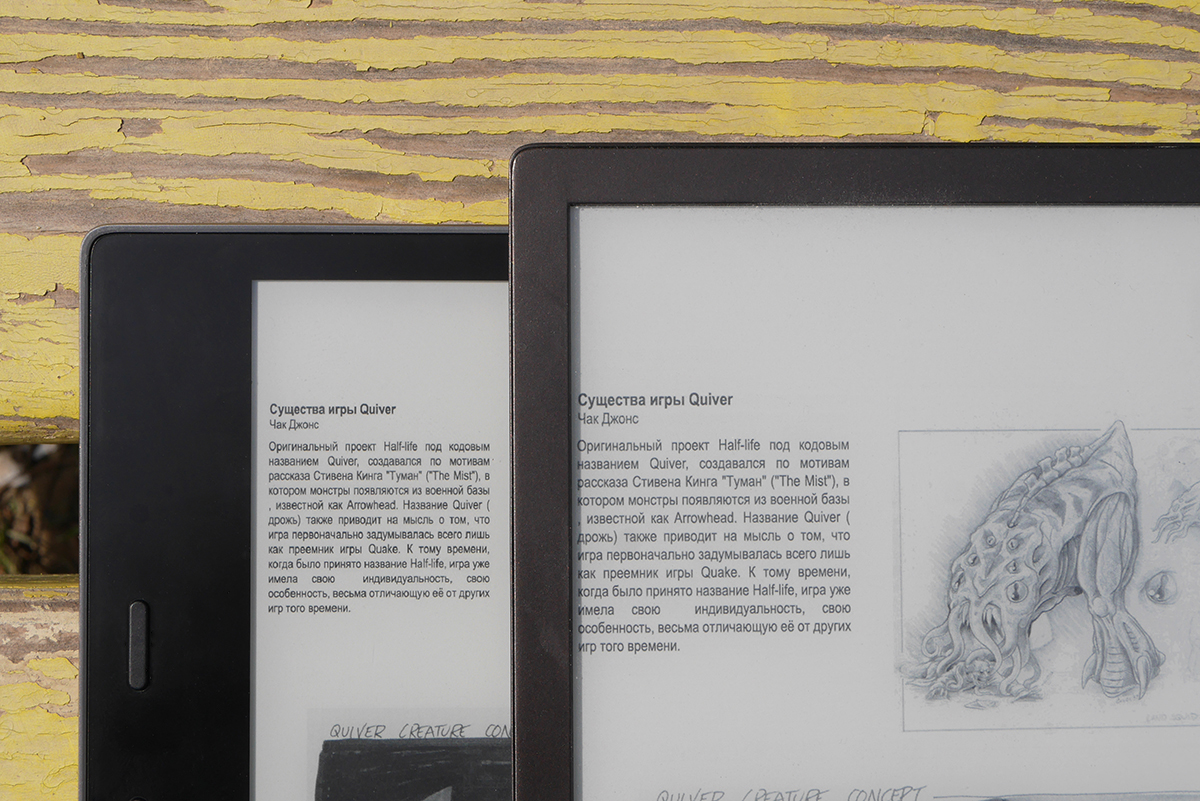
The screens in both cases are sensory and quite responsive. There is nothing to complain about, everything is comparable and quite comfortable. True, Kindle has a smoother display coverage - almost like smartphones. Due to this, scaling text with the help of multitouch, spreading and flexing fingers, is more pleasant. PocketBook 740 has a bit rough screen.
However, the glossiness and smoothness of the Kindle screen and the other side. More precisely, not even at the screen, but at the entire front panel, covered with one piece of glass. It gets dirty very quickly, and the reader looks sloppy. This is what I am talking about:

A short conclusion from the "screen" subsection: the quality of the screens are comparable. But the PocketBook 740 is larger in size. And noticeable. Despite the fact that the weight and width of the readers are almost identical. It seems to me that with such “introductory” it is better to get a larger screen than a smaller one. And the PocketBook 740 wins the size of the display.
Backlight
There is a backlight in both the PocketBook 740 and Kindle Oasis 2017. The maximum brightness is slightly higher in the Kindle, by 10-15 percent. According to the whiteness of the backlight, the Amazon model is also in the lead - the light is straight white. This kind of medical, just like in hospitals. Is it good? I can not say. It doesn't bother me personally, but I suspect that this light, as if coming from the operating room, will not suit anyone. PocketBook 740 has a bluish tint. I do not know what I like more - both options are good in their own way. You read with PocketBook - and you think that the shade is excellent, everything is as it should; You read from the Kindle - and you think exactly the same thing.
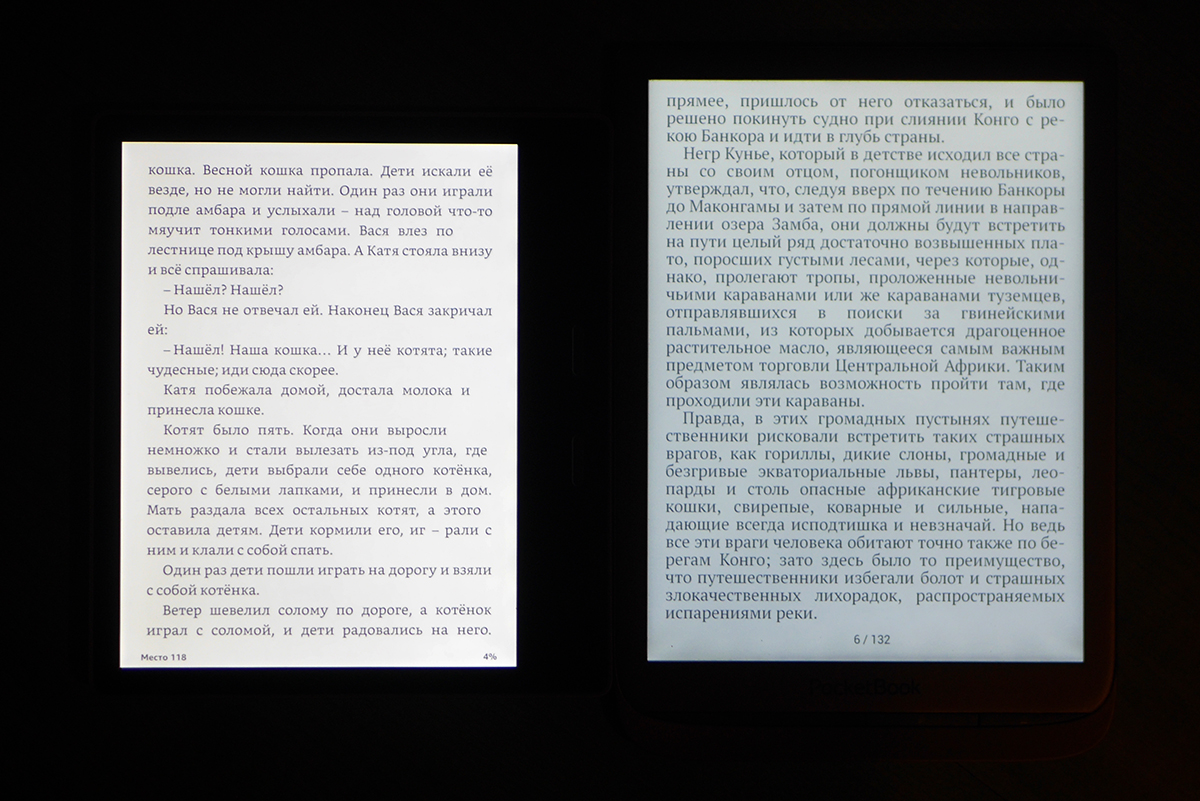
Kindle Oasis 2017 is able to adjust the brightness of the backlight using a light sensor.

PocketBook 740 contrasts this with fine-tuning the brightness depending on the time of day. For each hour, you can specify the preferred brightness and temperature of the light, after which all this will automatically change.

Speaking of color temperature. In the PocketBook 740 there is an option to adjust it, but in Amazon readers there is no this interesting and very useful option for comfortable reading. Not in any model, including Oasis 2017.
What does color temperature adjustment do? The screen can be illuminated not only with white light, but also with yellow and even orange shades of mass.

This is necessary, first of all, just for comfort - someone likes white lights more, and others like yellow ones. And PocketBook 740 gives you a choice. Secondly, to read before bedtime. The warmer the light, the faster the visual apparatus relaxes and, as a result, you want to fall asleep faster. That is, during the day, while you are “alert”, it is better to use the usual blue and white lighting, and in the evening, closer to sleep, it is orange.
Why Amazon doesn't integrate this chip into their readers is a big question. She's really useful and cool. And it is directly related to the main purpose of the reader - comfortable reading books. It’s good that PocketBook understands the importance of adjusting the color temperature, and all the latest top models have this function. In general, Amazon in this regard definitely looks like catching up.
It turns out that on the side of the Kindle - a slightly higher maximum brightness of the backlight and its whiteness. But PocketBook 740 wins by adjusting the color temperature. And this, in my opinion, is a more important point, because the maximum brightness of the package book is also quite enough, although it is slightly lower than that of the Kindle.
Functionality and work
With supported formats, the situation is as follows. PocketBook 740, like all other poketbooks, offers a maximum for the market - as many as 18 book and document formats: PDF, PDF (DRM), EPUB, EPUB (DRM), DJVU, FB2, FB2.ZIP, DOC, DOCX, RTF, PRC , TCR, TXT, CHM, HTM, HTML, MOBI and ACSM. That is, any book found on the Internet, will open without any problems - poketbooks are actually “omnivorous.” Plus on the PocketBook 740, you can open images in JPEG, BMP, GIF and TIFF. What can Kindle do? And practically nothing: support for only six book types of TXT, PDF, MOBI, PRC, AZW3, AZW files (the last two are Amazon’s proprietary formats, they are virtually useless for us). At the same time, Kindle can be forced to open DOC, DOCX, JPEG and a couple of other "picture" formats. To do this, you should use the Send-to-Kindle converter as a browser extension. In a couple of clicks, the files converted to a supported format will be delivered to the reader from a computer on the Internet. Is it convenient? In principle, you can live. But, nevertheless, this is still an extra dance with a tambourine, an extra gesture. Moreover, even with the possibility of fast conversion, the Kindle cannot even come close to PocketBook in the number of formats. , , Amazon : . PocketBook – , , . Kindle : , .
PocketBook. :

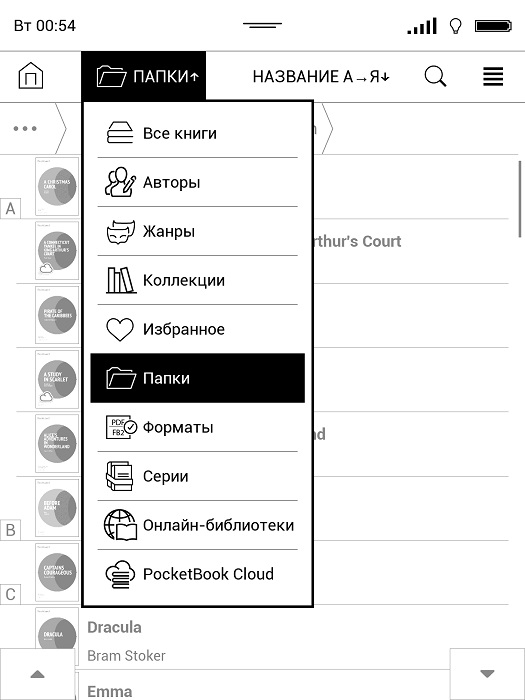
. Kindle : , , /, ( ). PocketBook 740 , . – , – , – Dropbox, – BookLand.com ( ).
PocketBook 740, Kindle Oasis 2017. , . ,
PocketBook – PocketBook Cloud. PocketBook 740, PocketBook 631 631 Plus.
. PocketBook (Webster's 1913, - . , - - PocketBook)…

… Kindle – (-, -, New Oxford American). .


PocketBook ( ), Kindle – : .

PocketBook 740 13 . , – , , . ( ), ( ), , ( 6 40, ). Kindle Oasis 2017 : 10 , ( ), ( ), (14 ), ( ).
, PocketBook 740. Kindle . , . . , ( Samsung « »). , , , . . , - , (, oper.ru).
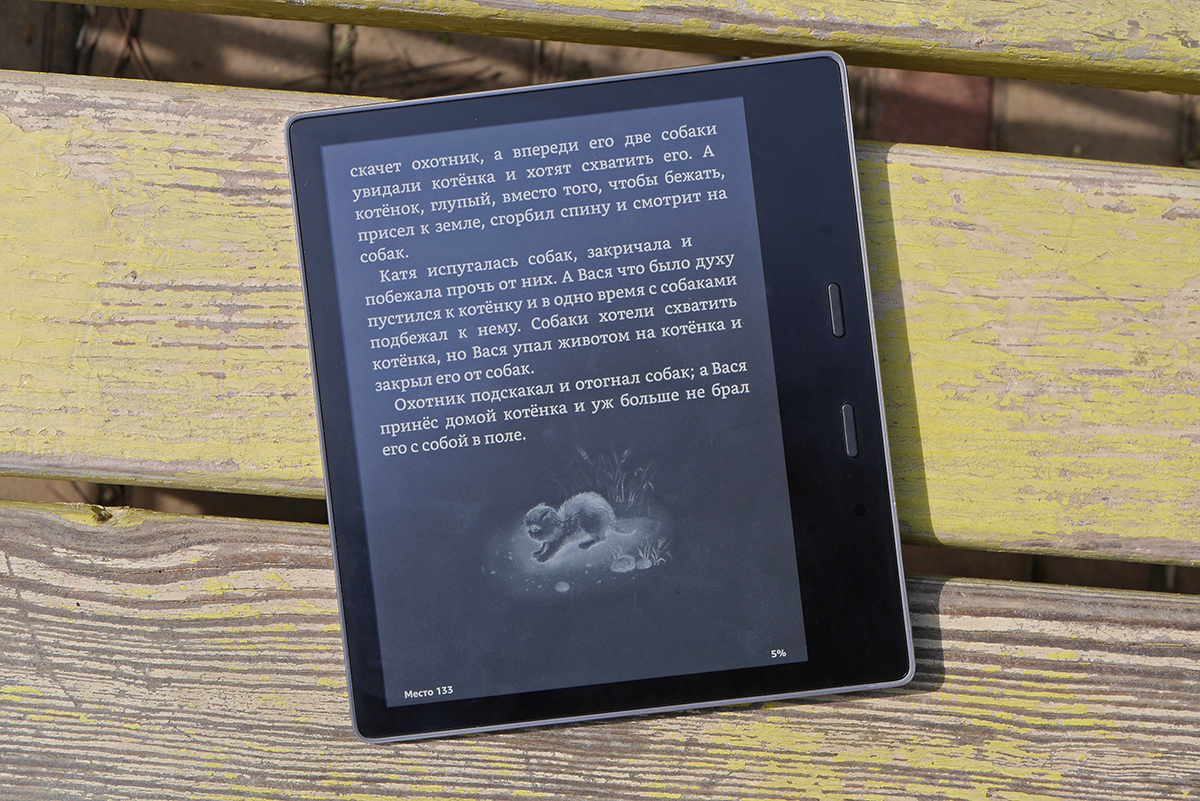
PocketBook 740 , . Kindle . Amazon 180 .

PocketBook 740. : , RSS-, , , , , , , , .

Kindle? . .
, . Kindle Oasis 2017 c Audible. , Bluetooth. – . , , Audible .
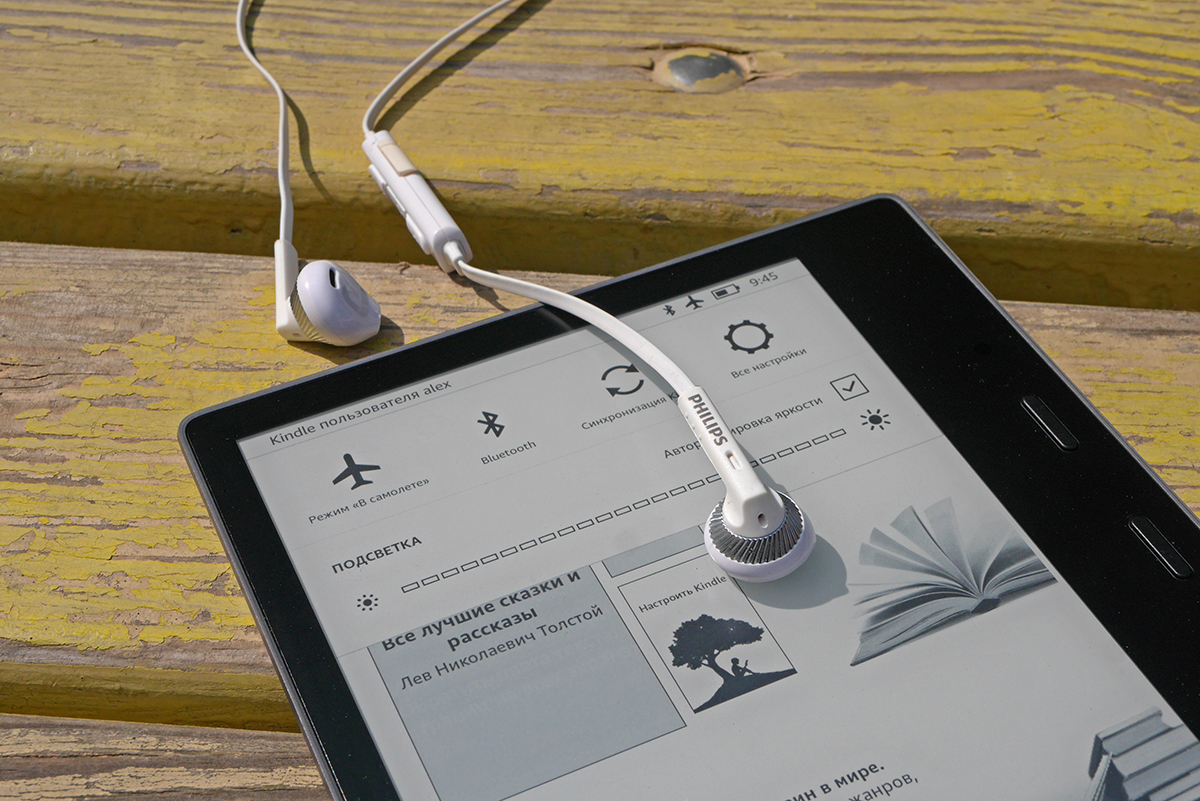
PocketBook 740 . , MP3- ( ), Text-to-Speech.
PocketBook 631 PocketBook 631 Plus , PocketBook 740.
PocketBook 740 8 , 5,8 . «» MicroSD 32 . Kindle Oasis 2017 8 , . – . 32 , . 280-300 , 30 . – .
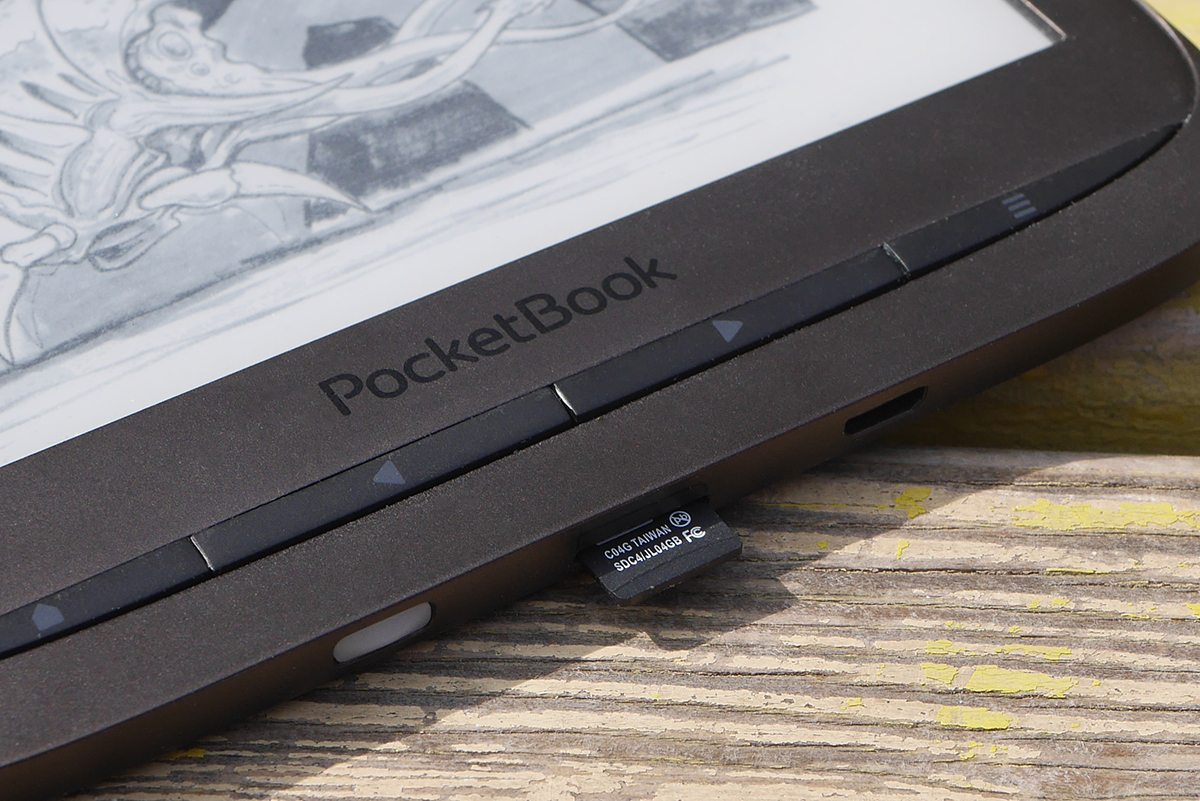
. , ? . … , , Kindle . , , . , Kindle Oasis 2017 . . , , – , Wi-Fi. PocketBook : , .
. , Kindle Oasis 2017, . , , PocketBook 740 . – . 2016 – , . PocketBook 740 Kindle Oasis 2017 .
PocketBook 740 15 – . – . PocketBook Kindle, , . . PocketBook 740 , , , (). , , 40% .
Amazon, , , Kindle Oasis 2017 . , . . , PocketBook 740, 40% .
, , PocketBook 740 . , , .
Warranty
. , - PocketBook , Amazon , , , . , . ( – !) Amazon . . – .
, , , . Kindle , , . : , Amazon , . (1000-2000 ), ( 1000-2000 ). , , , . , , , , Kindle, , , Amazon . : -, , , , -, , . . – , .
PocketBook, , ( ), PocketBook 740. – . . , - – . , « » ( Amazon), .
?
And the conclusions are simple. Kindle is like an iPhone. Fashionable, dear. And because of this, many people by default consider him to be such an immaculate ideal. They say that Amazon is so big, smart and rich that it produces only masterpieces. Of course, the Kindle Oasis 2017 has strengths. And more. He is cute and very well-assembled. He has a snow-white backlight and excellent screen. It works fast. Aluminum - well, let it be so - also write down the advantages, because metal in gadgets is always considered an advantage for some reason (although this is not always true). Protection against water seems to be there, again. Although I am not sure about its seriousness - the case here is most likely not airtight, that is, the protection is made by applying a sealing gel to the board, and not by the complete sealing of the case, as in the same PocketBook 641Aqua 2.
Flagship PocketBook 740 takes other things. He does not even take, but beats, and not for cats, but immediately over the squares. He has much better ergonomics and more grip options. It has a larger screen (7.8 inches versus 7), which takes the comfort of reading to a completely different level. And the screen of the PocketBook 740 with adjustable backlight color temperature, which is not in any model of Amazon. But this option is very cool and pleasant, because its presence deduces the perception of the display to a completely different level.
The PocketBook 740 also has a more durable case. More book formats (three times), more settings, noticeably longer battery life (up to two months against a month), more applications, memory cards and an official guarantee in Russia for three years (if you buy the device on the manufacturer’s website).

What is the PocketBook 740 definitely inferior to the model of Amazon? I think there is only one point: there is no protection against water (even at the basic level!) In PocketBook 740. Kindle's specific audio capabilities also seem to be a plus, but purely in theory. Audible is not common here, and not everyone has Bluetooth-headphones (and the Kindle only supports them).
I will say more. All this theoretical "rivalry" becomes meaningless under the pressure of yet another reinforced concrete advantage of
PocketBook 740 : prices. She is 14 900 rubles. Kindle Oasis 2017, as I wrote at the very beginning, can be ordered through an intermediary in the United States and get a reader for 18-19 thousand rubles. Or buy in Russia from dealers for 25 thousand rubles. I would understand if Kindle and PocketBook were available in our country for the same money. Then some doubts would have been possible when choosing, although I believe that the Amazon model should be cheaper - 12 thousand, no more. But no, this is not and never will be. For possession of Kindle Oasis 2017 will have to pay 18 000-25 000 rubles. And it seems to me that it is clearly not worth it. It is too expensive. There is absolutely no point in buying this reader in Russia. Especially if you consider that there is a PocketBook 740. Which is not that bad, but better in most parameters. And much cheaper.
PS I'll come back to the issue of aluminum. I noticed that the MicroUSB cable split a couple of grooves in the contour of the corresponding socket on the Kindle Oasis 2017 (see the white dots in the photo). Although the cables were inserted well, twenty times, no more, and very carefully, because the device does not belong to me. So yes, the material is delicate, and with time during normal operation, even without drops and bumps, dents and scratches will most likely appear on it.
